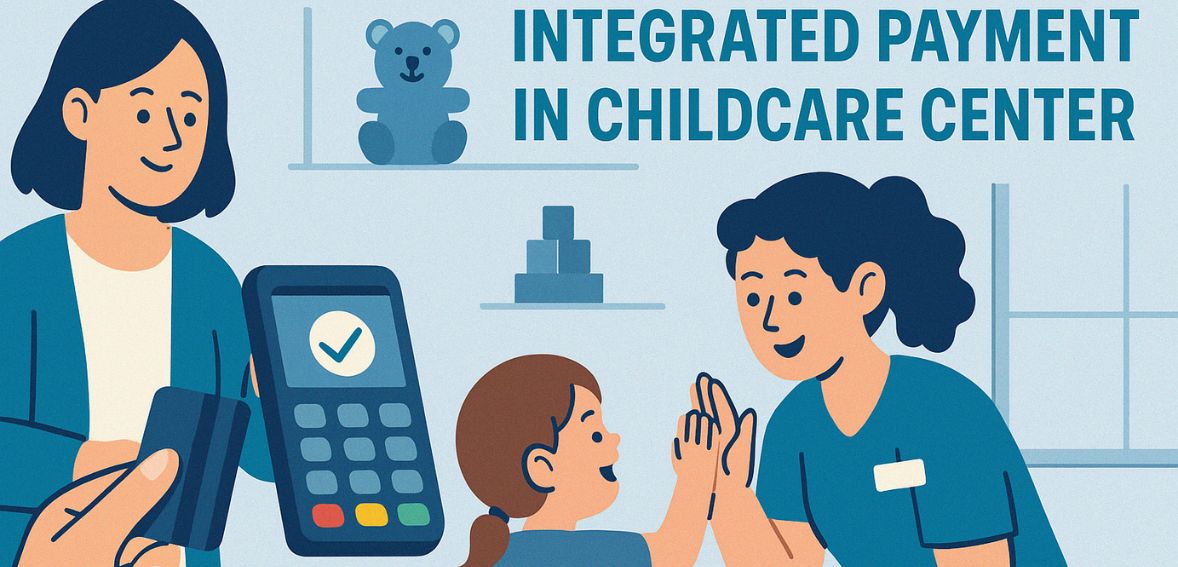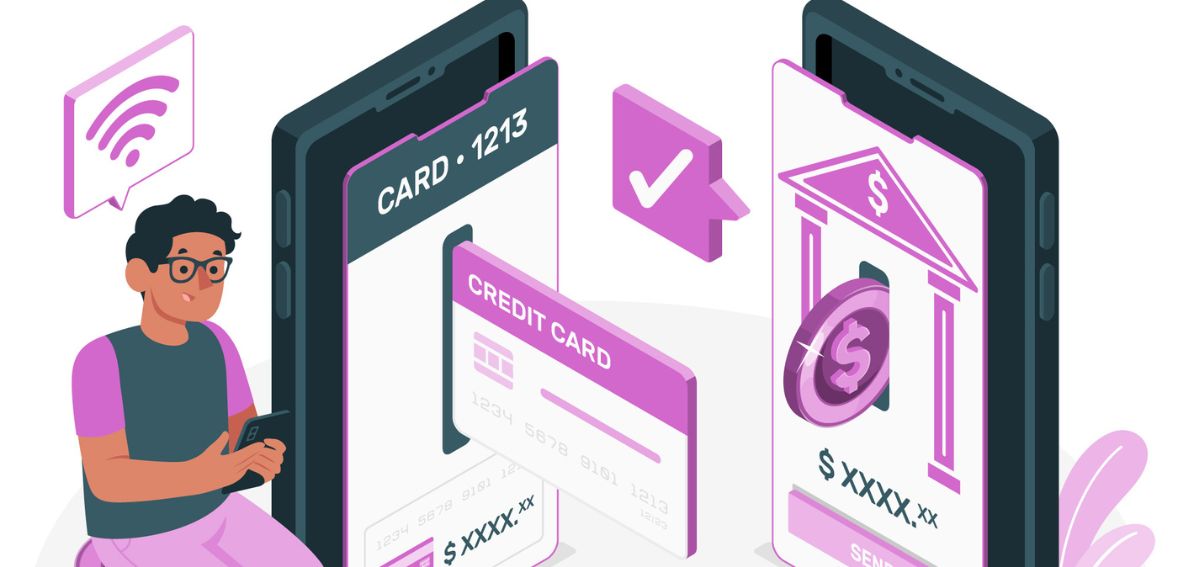
By alphacardprocess May 28, 2025
Operating a child care center is a balancing act of many crucial responsibilities—everything from creating a secure and beneficial environment to managing personnel and regulatory policies. In the middle of such routine responsibilities, effective management of payments is required in a bid to make operations smooth and economically valuable. Integrated payment processing has proved to be an essential tool for childcare centers, simplifying payments and ensuring administrative ease and customer satisfaction. In the course of this article, we discuss the importance of choosing integrated payment processing systems for the contemporary child care center and how it can benefit them in management and development.
What Is Integrated Payment

Integrated payments are where a company integrates its payment processor into its point-of-sale (POS) system. Integrated payments allow customers to pay with multiple forms—such as credit cards, debit cards, or online payment wallets—without using additional terminals or manual input. Payments are made directly in the system, updating inventory and numbers sold in real-time automatically. By incorporating this payment functionality into your current software, website, or mobile app, consumers can finalize an appointment without leaving your site. The outcome is a more seamless checkout process, greater efficiency, and fewer errors for your company.
How Integrated Payment Systems Work

Integrated payment systems automate the transaction processing by bringing payment processing into standard business operations. Rather than entering and reconciling transactions by hand—a time consuming and error-prone process—these systems do the entire payment process. Payments are entered and matched with related invoices or sales records in real-time, with little reliance on other systems or human intervention.
This automates maintaining current and precise financial information while conserving time and lowering administrative expenses. By linking payment processing with programs such as invoicing, stock, and reporting applications, combined systems provide an integrated, seamless payment environment.
Free from any strings of novelty or pilot schemes, integrated payment systems are a proven solution. They have already been implemented successfully by numerous businesses and have quantifiable gains in operational efficiency and customer satisfaction.
Benefits of Integrated Payment for Child Care Center

1. Streamlined Operations
Integrated payment systems also streamline administrative processes by combining billing, enrollment, and attendance into one system. Employees don’t have to switch between multiple different tools or re-enter information between systems, reducing human errors and saving hours of time weekly. This eliminates the burden on employees to spend more time on delivery programming and less on repetitive paperwork.
2. Fewer Errors
When systems are not integrated, errors can easily get into the billing—like lost payments, duplicate payments, or accounts that have expired. Integrated solutions naturally sync data between functions so that financial records always reconcile enrollment and attendance. That’s equivalent to more accurate reporting, less parent complaints, and a less complicated financial process in general.
3. Easy for Parents
Parents today love convenience. Parents can fill out registration forms, pay, view calendars, and even get receipts from one location—desktop or mobile. It is more convenient to engage, less likely to miss deadlines, and makes the overall impression of professionalism and care for your center better.
4. Better Cash Flow
With recurring billing capabilities, childcare centers are able to automate month-to-month payments—without reminders and with timely payments received. This brings consistent revenue, shortens payment cycles, and keeps finances streamlined. Automated reminders even give parents advance notice before billing cycles, making it open and reliable.
5. Multiple Payment Options
Unified systems enable parents to pay on their own terms—credit cards, debit cards, ACH bank transfers, or digital wallets. Secure payment options in multiple choices boost the chances of timely payments, reduce friction, and accommodate diverse financial needs for your users.
6. Better Parent Experience
Simplified payment and registration is a perfect mirror of ease on your brand. The more quickly parents are able to accomplish tasks without frustration or error, the more their confidence builds in your child care center. Real-time confirmations, open invoices, and friendly portals give peace of mind and minimize back-and-forth with your staff.
7. Facilitates Growth
As your child care center grows, manual systems become a pain. Integrated payment systems grow with your business, so you can increase the number of families without ever sacrificing speed. With less time spent on admin, your team has more energy to put into rolling out new programs, enhancing learning experiences, and strengthening community connections.
What to Look for In a Top Payment Processor for Your Childcare Center

1. Top Security Standards
With parents’ financial information, safety comes first. A reputable payment processor should be following the newest compliance regulations, such as PCI DSS, and local data protection legislation. Always ensure your provider is encrypting sensitive data and has strong fraud protection measures in place for your childcare center payment security.
2. Multi-Payment Method Support
Families these days want flexibility in payment. Your processor must support all the most widely used modes—credit and debit cards, UPI, bank transfers, ACH for recurring billing, and digital wallets such as Apple Pay or Google Pay. The more options there are, the fewer late payments there will be, and your clients will be happier.
3. Easy Integration with Your Billing Tools
Not all childcare centers employ an in-house tech department. Your payment processor should be simple to integrate within your current childcare billing or management software. Whether you have a hosted system or a more advanced API integration, adequate documentation and open onboarding are the most critical considerations.
4. High Transaction Success Rate (TSR)
Nothing annoys parents more than declined transactions—particularly when they’re paying on time. Excellent payment processing provides seamless processing by lowering drop-offs during OTP verification, minimizing gateway errors, and providing bank-grade reliability. Excellent TSR provides fewer support calls and improved cash flow for your center.
5. Quick, Friendly Checkout Experience
A seamless checkout can be the make-or-break between a successful sale and one abandoned. Find a processor that lets you tailor the checkout to your brand and streamline with saved card information or auto-filled bank account numbers. Fewer clicks save time on transactions and keep customers happy.
6. Strong Customer Support
No system is perfect. When something goes wrong, you need help—in a hurry. A solid payment processor has a reliable support means like live chat, 24/7 help desks, or knowledgeable email. From a billing glitch to a refund inquiry, responsive support keeps your business running smoothly.
7. Actionable Insights Through Reporting
In addition to accepting payments, premier processors notify you of them. Real-time dashboards and downloadable volume, success, and preferred payment-type reports allow you to make more informed business decisions and adjust your collections strategy in the long term.
Integrated vs. Non-Integrated Payment Systems

Here is a brief overview of Integrated vs. Non-Integrated payment:
Integrated Payment Systems
Integrated payments are designed to tie into your current business software—accounting, inventory, or customer management systems, for instance. At the moment you make the transaction, the appropriate information is automatically synced between your systems, lowering manual actions and making it more accurate. Real-time syncing simplifies operations and provides you with improved visibility into your business.
Non-Integrated Payment Systems
In contrast, non-integrated systems operate separately. Payments are processed separately from other business functions, meaning you’ll need to manually enter data into multiple systems. While this may be manageable for very small businesses, it often results in time-consuming work, a higher risk of errors, and slower reporting as operations grow.
|
Feature |
Integrated Payment Systems |
Non-Integrated Payment Systems |
|
Data Management |
Syncs payment data instantly across systems |
Needs manual entry across multiple platforms |
|
Operational Efficiency |
Automates tasks to save time and reduce mistakes |
Slower processes with higher risk of errors |
|
Customer Insights |
Centralized analytics for better decision-making |
Fragmented data makes insights harder to track |
|
Scalability |
Easily adapts to growing business needs |
Harder to scale with increased complexity |
|
User Experience |
Seamless, faster checkout with fewer steps |
Disjointed process can frustrate customers |
Conclusion
Integrated payment processing is more than an amenity to child care centers—it’s a total game-changer that simplifies finances for management, decreases administrative headache, and improves parent’s and employee’s overall experience. By embracing seamless payment solutions, child care providers can save fewer minutes of their time on administration and more time on delivering quality care and having a good environment for kids. Integrated payment processing is a wise move toward operational effectiveness and profitability for the future of a competitive childcare business.
FAQs
1. What is integrated payment processing?
It’s an integrated system that combines payment collection and child care management software to facilitate billing and accounting.
2.How does it help child care centers?
It eliminates manual labor, accelerates payments, and enhances financial accuracy and parent contact.
3.Can parents pay online using integrated systems?
Yes, secure online payments are facilitated easily by parents, which improves convenience and timely collection of fees.
4. Is integrated payment processing secure?
Yes—such systems rely on encryption and compliance requirements to safeguard sensitive payment information.
5. Will it help reduce late or missed payments?
Yes, reminders are sent automatically, and easy payment options instill timely payments and reduce overdue amounts.
Leave a Reply